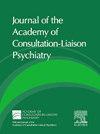非典型精神病患者自身免疫性脑炎早期识别和诊断的临床工作流程。
IF 2.5
4区 心理学
Q2 PSYCHIATRY
Journal of the Academy of Consultation-Liaison Psychiatry
Pub Date : 2025-05-01
DOI:10.1016/j.jaclp.2025.02.001
引用次数: 0
摘要
背景和目的:非典型精神病通常难以诊断和治疗,并且在确定潜在病因方面的延误可能会恶化患者的预后。我们提出了一个新的临床工作流程,为患者呈现到急诊科(ED)的非典型精神病的特点,以规范诊断过程与早期识别和诊断自身免疫性脑炎的目标。方法:通过文献回顾和多学科讨论,我们开发了一个临床工作流程来指导患者管理和诊断测试,使用以下确定的非典型精神病的“红色”和“黄色”标志:原因不明的癫痫发作、局灶性神经功能缺损、自主神经不稳定、无抗精神病药物时的运动障碍、低钠血症、年龄在40岁至40岁之间、对两种适当治疗试验难治的精神病、感染性或全身性前驱症状、恶性肿瘤史。然后,我们回顾了电子医疗记录,以评估接受该工作流程的患者的处置和结果。结果:从2022年1月到2023年9月,38名非典型精神病患者在综合精神病学急诊项目中使用我们的新工作流程进行了评估。大多数患者(23/38)因一个黄旗而进入工作流程,年龄大于40岁是最常见的标志特征(31/38)。最终,57.9%(22/38)被诊断为原发性精神障碍,15.8%(6/38)被诊断为原发性神经系统疾病,其中包括3例免疫介导的病例。一项对神经病学和精神病学团队成员的调查显示,工作流程通常被认为是简单有效的。结论:我们新颖的临床工作流程有助于非典型精神病患者的早期神经系统咨询和管理,识别免疫介导和非免疫介导的神经系统疾病。本文章由计算机程序翻译,如有差异,请以英文原文为准。
Developing a Clinical Workflow for Early Recognition and Diagnosis of Autoimmune Encephalitis in Patients Presenting With Atypical Psychosis
Background and Objective
Atypical psychosis is often difficult to diagnose and treat, and delays in identifying the underlying etiology can worsen patient outcomes. We present a novel clinical workflow for patients presenting to the emergency department with features of atypical psychosis to standardize the diagnostic process with the goal of earlier recognition and diagnosis of autoimmune encephalitis.
Methods
Through literature review and multidisciplinary discussions, we developed a clinical workflow to direct patient management and diagnostic testing using the following identified “red” and “yellow” flags of atypical psychosis: unexplained seizures, focal neurologic deficits, autonomic instability, movement disorder in the absence of antipsychotics, hyponatremia, age greater than 40 years, psychosis refractory to 2 appropriate treatment trials, infectious or systemic prodrome, and history of malignancy. We then reviewed electronic medical records to assess the disposition and outcomes of patients who underwent the workflow.
Results
From January 2022 to September 2023, 38 patients presenting with atypical psychosis were assessed using our new workflow in the Comprehensive Psychiatric Emergency Program. Most patients (23/38) entered the workflow due to one yellow flag, and age greater than 40 years was the most frequent flag feature (31/38). Ultimately, 57.9% (22/38) were diagnosed with primary psychiatric disorders, while 15.8% (6/38) had primary neurological diagnoses, including 3 immune-mediated cases. A survey of neurology and psychiatry team members showed the workflow was generally viewed as straightforward and effective.
Conclusions
Our novel clinical workflow facilitated early neurologic consultation and management of patients presenting with atypical psychosis, identifying both immune-mediated and nonimmune-mediated neurologic disorders.
求助全文
通过发布文献求助,成功后即可免费获取论文全文。
去求助
来源期刊

Journal of the Academy of Consultation-Liaison Psychiatry
Psychology-Clinical Psychology
CiteScore
5.80
自引率
13.00%
发文量
378
审稿时长
50 days
 求助内容:
求助内容: 应助结果提醒方式:
应助结果提醒方式:


